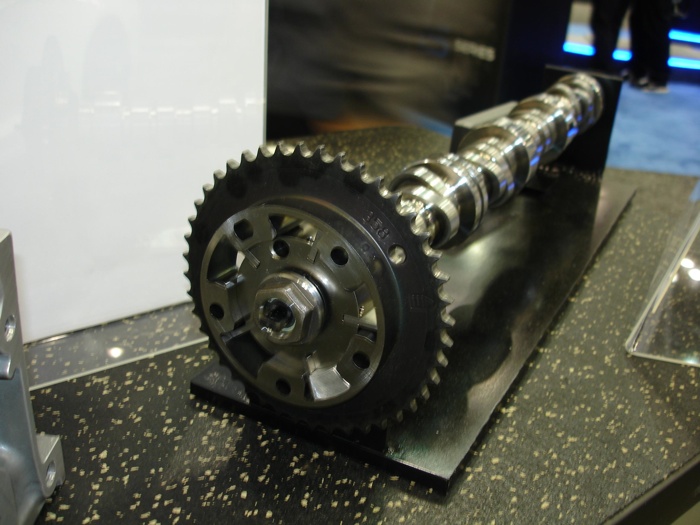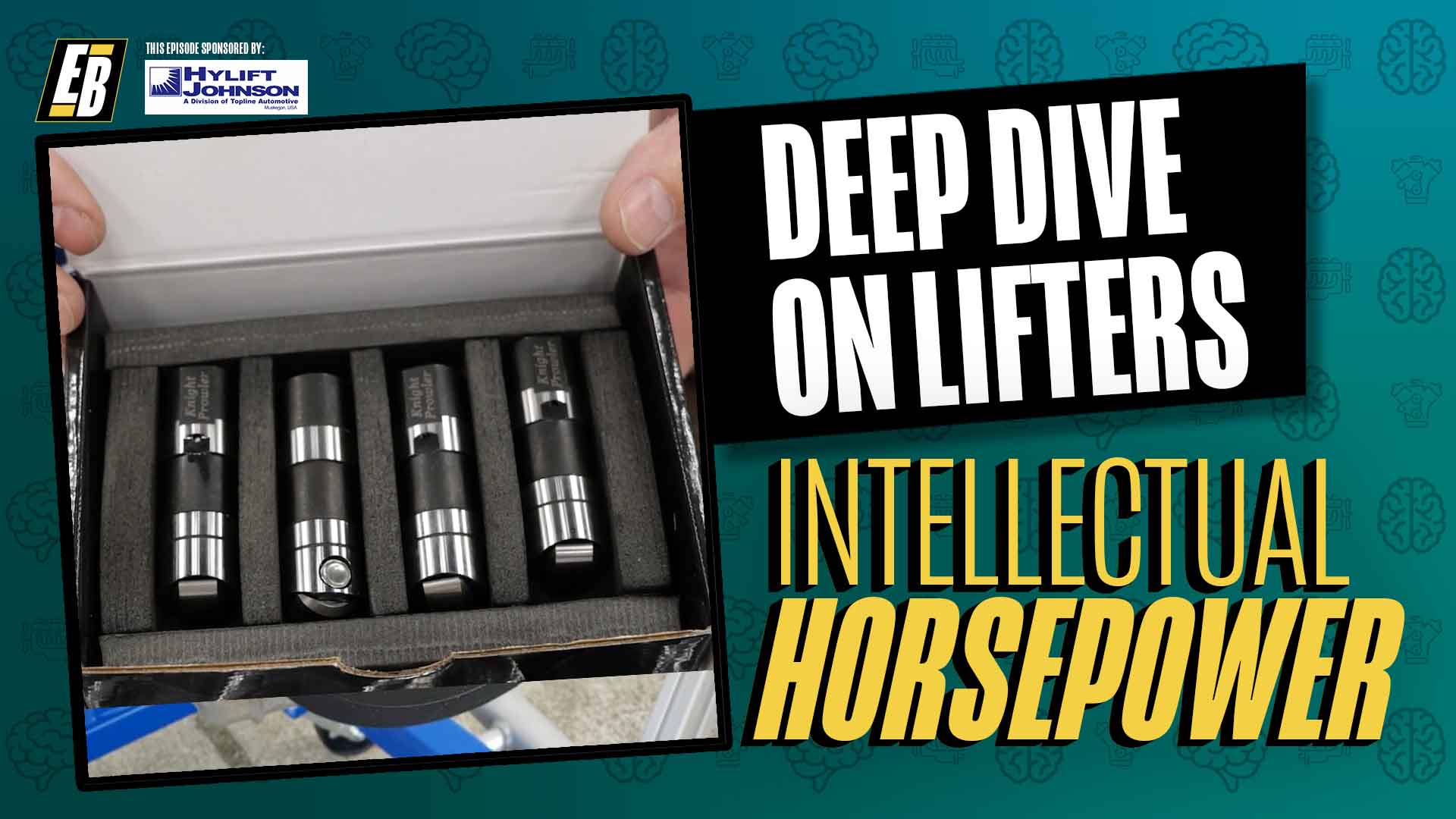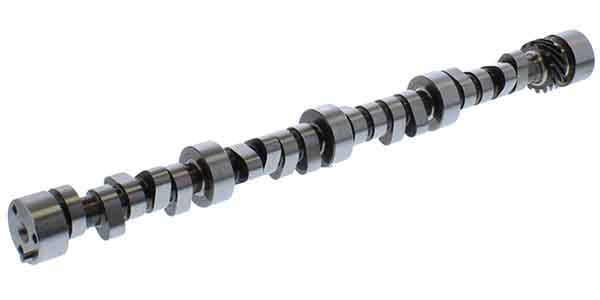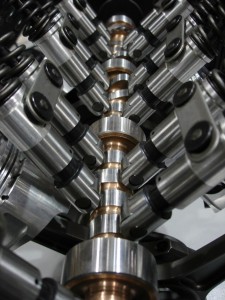
One of the most important decisions an engine builder has to make when planning and building an engine is selecting the “right” camshaft. There are dozens of brands and thousands of different cam grinds to choose from, with different lift, duration and lobe center specifications. There are flat tappet cams, roller cams, solid lifter cams and hydraulic cams.
Choosing the right cam from all of the possibilities that are out there can make a significant difference in how well an engine performs. It’s all about balance and correctly matching the cam with the cylinder heads, compression ratio, intake and exhaust systems, and RPM range where you want the engine to produce the most torque and horsepower.
Some say building a performance engine is simple: you just build the rest of the engine around the cam. Rather than choosing a cam as an afterthought and hoping it works well with a given set of heads, intake and exhaust manifolds, compression ratio and gearing, start with the desired end result (like how much power do you want to make and in what RPM range) and work backwards from there to pick a cam, compression ratio, cylinder head, intake and exhaust system combination that is realistically capable of achieving your goals.
Experienced cam grinders won’t recommend a cam or custom grind a cam until they have all of the pertinent details that are necessary to determine which grind will work best in a given situation. Most custom cam grinders have a highly detailed spec sheet that has to be filled out before they can match a customer’s requirements with a particular set of lobe profiles.
The engine information spec sheet will ask for basic engine information such as year, make, type of engine, bore, stroke, type of heads (stock, aftermarket, port volumes, etc.), type of valvetrain (pushrod or OHC), valve sizes, rocker ratios, valve spring specs, compression ratio, rod length, type of induction system (naturally aspirated, number and size of carburetors, fuel injected, boosted, boost pressure, nitrous) and type of exhaust manifolds (long or short headers, tri-y or 4-into-1, collector length). In addition, the cam grinder will also want to know the vehicle application (street, street/strip, drag, circle track, road race, off-road, etc.), vehicle weight, transmission type and gearing, final drive ratio, and your desired power and RPM range.
Once all of the details have been established, they can recommend the lobe profiles that will be best suited to the information you have provided. Everything has to work together otherwise you’re going to fall short of your goals.
One of the most common mistakes engine builders make when choosing a cam, says one cam supplier, is jumping to the bottom of the catalog page and picking the cam with the biggest numbers. Or, picking a hot cam that has the potential to deliver really big numbers without actually thinking through whether or not this is what a particular application really needs.
Everybody wants the hottest cam that will produce the highest peak horsepower numbers, but torque is actually much more important than peak horsepower – especially if you’re building a street performance motor. Torque is what accelerates and pushes a car down the road, not peak horsepower. And the flatter and broader the torque curve, the better the drivability and throttle response you’ll get from the engine.
Camshaft R&D
One camshaft grinder we interviewed said his company has developed more than 60,000 different lobe profiles over the years, and currently offers more than 18,000 different grinds in its catalog. Like most cam suppliers, all kinds of different grinds are available for different applications. Rather then trying to second guess which cam might be the right one to choose, the best advice is to call your cam supplier, discuss what you’re trying to accomplish and let them guide you as to which of their products will most likely deliver the results you want. There’s no substitute for experience when it comes to choosing a cam, and most of these companies have a wealth of know-how that you can tap into to guide your selection process.
There is a science that goes into developing new lobe profiles and figuring out what works and what doesn’t. An aggressive lobe profile that opens the valves quickly may make more power, but it may also kill the life of the valve springs. Likewise, a really pointy cam lobe that produces a lot of valve lift can be hard on the lifters and valvetrain. Some cam grinders would rather go with a shorter and rounder lobe that shifts more of the valve lift to a set of high ratio rocker arms.
Many of the cam suppliers we spoke with say they are using “asymmetrical” lobe profiles on most or all of their cams. An asymmetrical lobe profile is one that has a different ramp on the opening and closing sides of the lobe, as opposed to a “symmetrical” lobe, which has the same ramp profile on both sides of the lobe.
Asymmetrical cams may also use different lobes for the intake and exhaust valves, and even different lobes for individual cylinders depending on the cylinder’s location in the engine block and the type of intake manifold that is used. Many asymmetrical cams use a steeper ramp on the opening side of the cam lobe to push the valve open faster, and a shallower ramp on the exhaust side to cushion the valve as it closes to reduce valve bounce and spring harmonics.
“A symmetrical lobe profile is faster and easier to develop, but it’s a lazy way of designing a cam,” says one engineer. However, another cam engineer tells us exactly the opposite; that he prefers symmetrical lobe profiles because they are easier on the valvetrain and springs. Different cam suppliers obviously have different approaches and philosophies about lobe profile designs.
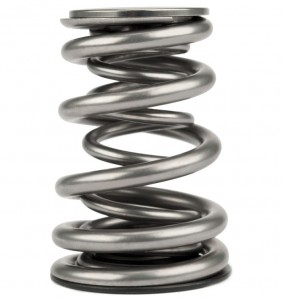
frequencies that reduce valvetrain harmonics. Also, they don’t touch like conventional dual springs so they run cooler and last longer. (Courtesy of Comp Cams)
Camshaft Trends
Hydraulic cams continue to evolve, with performance that nearly matches or in some cases exceeds that of solid lifter cams. In days gone by, hydraulic cams were usually used mostly in street engines because they run quieter than a solid lifter cam (no valvetrain clatter) and because they have zero valve lash (no valve adjustments required). A hydraulic cam can also provide additional torque over a comparable solid lifter cam at low and mid-range engine speeds. But hydraulic cams were not used much in racing applications because of their limited RPM range (about 6,500 RPM max).
In recent years, the development of new lobe profiles and short travel hydraulic lifters has increased the RPM limit for some hydraulic roller cams to 7,500 RPM or even higher. We’ve seen sprint cars with Chevy LS engines revving to 8,000 RPMs with hydraulic roller cams.
One cam supplier said that within a few years, their “next generation” hydraulic roller cams will be capable of revving to 9,000 RPM. They also predicted that hydraulic roller cams will even find their way into ProStock drag racing. “Some ProStock racers are running a very tight hot lash setting, only .010˝, with their solid lifter cams to get as much valve lift as possible. It’s really pushing the envelope because some of these engines won’t start with so little lash unless you preheat the block. What’s more, if there’s any seat wear or the engine runs too hot, you’ll burn the exhaust valves because there is not enough lash.”
Although some cam suppliers have not done much development work yet for current generation engines such as Chevy LS, Ford Modular and Coyote, and the new Chrysler Hemi, others are moving forward with hot new cams for many of these engines. The demand for new camshaft designs has lagged somewhat behind the introduction of these new engines. Chevy LS is now a hot commodity, followed by the Ford modular engines. The Ford Coyote and Chrysler Hemis are still somewhat behind on the demand curve.
One of the problems in developing new cams for these engines is that the OEM factory cams are quite good. One cam supplier said it is hard to find a lot of additional power in many of these engines by just changing the cams. The OEMs have done such a good job of refining the cams that there’s not a lot of room left for improvement. Yet for serious racing applications that involve extensive engine modifications (ported heads, bigger valves, different intake and exhaust systems, etc.), there’s always room for improvement.
For street performance and muscle car applications, many cam suppliers have special “noise” cams that produce an old school, lumpy idle while boosting low and mid-range torque. These cams typically have more exhaust duration to push more rumble into the exhaust system.
Another trend impacting camshaft design is the move to smaller, turbocharged engines. Carmakers are downsizing engines to boost fuel economy and to reduce CO2 emissions. They have to meet much tougher corporate average fuel economy requirements in the years ahead, and one of the ways of accomplishing that is to replace V8 and V6 engines with turbocharged four-cylinder engines. Most of the cam suppliers we’ve spoken with say they have not seen any demand for new cams for these engines yet, but that eventually it could be a new market. The current sport compact market is limited to a handful of makes, and most of these are relying more on bolt-on turbo tweaks and tuning to boost power rather than camshaft or other mechanical changes.
Turbocharged engines have different camshaft requirements than naturally aspirated engines. Boosted engines don’t need a lot of duration or valve overlap to fill the cylinders because the turbocharger (or supercharger) does the pushing. Less valve overlap also helps a turbo spool up faster for less turbo lag when you floor it. A street turbo application should have good low and mid-range torque and throttle response. But with a drag application, it’s all about top end power. A turbo drag motor will typically run a large turbo, with retarded cam timing and more overlap than a street turbo application.
Another change in camshaft design that has come about in recent years is the use of higher quality materials in some cams (such as tool steel cores) as well as better surface finishes. Phosphate coatings are now much finer than they were in the past. Some cam suppliers also apply special micro-polishing treatments to their cams to reduce friction and improve longevity.
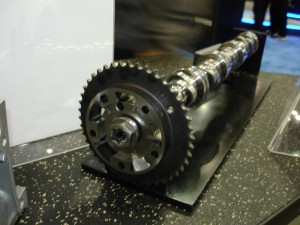
How Valvetrain Components Affect Cam Selection
The stiffer and more stable the valvetrain, the better it will work with any camshaft. Pushrods that flex like a pole vault stick, valve springs that shake and gyrate with little control and rocker arms that wobble and deflect under load are not good for high RPM performance. Flex in the valvetrain can actually reduce valve lift and duration at higher engine speeds, causing a loss of peak horsepower.
Performance cams should always be used with valvetrain components that minimize flex, harmonics and instability. Pushrods should be thick walled and/or larger diameter to increase stiffness. Beehive springs, conical springs or dual conical springs can usually provide better control with less seat pressure than conventional valve springs. Larger, stiffer studs and pivot bearings for stud mounted rockers, and a stud girdle can provide much-needed support and stiffness for stud-mounted rockers. Shaft-mounted rockers are even better.
High-lift rocker arms increase valve lift as well as the opening and closing rates of the valves (valve acceleration) with minimal effect on duration or overlap. However, the increased leverage they provide also increases the effect of spring pressure on the pushrods, lifters and cam. That’s why stronger, stiffer pushrods are a must with high lift rocker arms. Also, proper lubrication is critical for flat tappet cams and lifters to survive. The motor oil must contain adequate levels of ZDDP to provide extreme pressure lubrication for the cam lobes and lifters.
It’s also important that high-lift rockers should be as stable as possible with adequate bearing support to handle the loads. Some shaft, pedestal and stud-mounted rockers also use bushings instead of needle bearings to spread the load over a broader surface area.
Another way to increase stiffness, reliability and consistency in the valvetrain is to go with a larger diameter cam. Aftermarket blocks with oversized cam bores allow a larger camshaft with a thicker shaft, larger journals and larger lobes. Some ProStock drag racers are running cam bores as large as 82 mm!
As we’ve explained in this article, choosing a cam isn’t as simple as opening a catalog and picking one off the page, or going to a website and clicking on a particular grind. The cam ties everything together and determines the engine’s torque and horsepower curves. So picking the right cam should involve a lot of thought, analysis and planning so you end up with a winning combustion that delivers the results you promised your customer. n
Special thanks to: Camcraft Cams LLC, Comp Cams, Crane Cams, Elgin Cams, Erson Cams, Howards Cams, Lunati. For information on how to reach each of them (and many other suppliers of camshafts and accessoies, check out the online Engine Builders Buyers Guides at
www.EngineBuilderMag.com.

